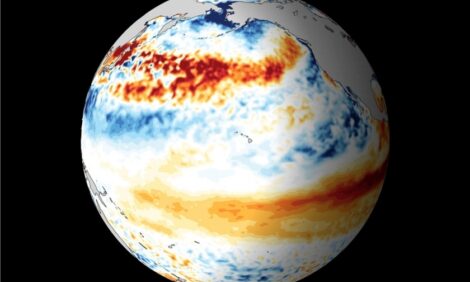



World Dairy Expo: Rabobank's Mary Ledman shared global dairy markets insights
Rabobank's Mary Ledman shared insights about global dairy markets at an education seminar the 2024 World Dairy ExpoMary Ledman, Global Dairy Strategist with Rabobank, spoke to The Dairy Site’s Sarah Mikesell at the World Dairy Expo in Madison, Wisconsin, USA in early October 2024.
Tell me about the global dairy sector and some of the industry drivers.
Longevity does have some advantages. My first entrée to the global dairy industry was with the FFA program in 1984 – going to and working on a dairy farm in Germany. It's kind of very fulfilling for me to come back here. I grew up just south of Madison and to be back home here at World Dairy Expo with my global team is exciting.
I don't know if everybody really understands the role that the US plays in the global dairy markets. My team will explain the role that Oceana, New Zealand, Australia, a fraction of the world's milk production, but still strong in global exports. About 95% of New Zealand’s milk production is exported. In the United States, we export 15% to 20% of our milk in any given month, so we have a strong domestic market.
When we look at the global market, we have what we call the Big Seven. The following represent global dairy trade:
- New Zealand and Australia (Oceana) – 30%
- Europe – (27 countries + the UK) – 30%
- US – 15%
With just those three regions, we're at 75%, then add South America and we're over 80%.
When we look out for the next 10 years, we really see stagnant to declining milk production in Oceana and Europe. Our estimate is that European and Oceana milk production in 2035 will be less than what it was in 2023. However, we see US milk production on average growing about 1.5%. As a result, over the next decade, we see US growing in market share globally.
Do you see a maximum capacity for the US or is it just that you don't see it capping out at this point?
No, I think in some ways you could say the sky is the limit for the US. When you think about places like South Dakota – a lot of land, a lot of water, great natural resources, but not a lot of people. That is not the situation in the Netherlands. There’s a lot of people; there's a lot of livestock units. And their ability to grow is encumbered. We still have a lot of untapped potential for milk production in the US.
We certainly hear a lot about the manure disposal dilemma in Europe. Has it become a limiting factor for growth?
That's true, but it's really a water quality issue. What's driving the manure directives now, it's what I call, their kind of the farm bill equivalent, it’s their European Common Agricultural Policy (CAP). It's a water quality directive that goes back to the 1990s, which is being enforced. I think everybody around the world can agree that fresh quality water is important for everyone. That's really what's driving those capacity constraints in livestock units in places like in the Netherlands and Ireland today.
How do you see the competitive dynamics in the global dairy industry evolving?
We've seen a real switch here in the last couple of years, with China being the number one dairy importing country – that peaked in 2021. Even a bit before that, China was teeing up its dairy industry. They're kind of equivalent to the Farm Bill back in about 2018 to 2019.
The Chinese government made the goal back in 2018 to increase their milk production by about 11 million metric tons. Converting that into billion pounds of milk, it's about 25 billion pounds of milk. It was basically the equivalent of the annual milk production from Idaho and Washington State together. They increased by that magnitude from about 30 million metric tons to over 40 million metric tons in a five-year period. They went from about 70% self-sufficiency to about 85% self-sufficiency.
As a result of that, they've needed less imports from New Zealand. But remember I said New Zealand exports 95% of their production. New Zealand has had to pivot and perhaps make less whole milk powder, which they were exporting to China. They make more skim milk powder and butter, and their skim milk powder competes against skim milk powder being produced in Europe and the US. What has happened to China has had a domino or ripple effect as they've become more self-sufficient. It's increased the competitiveness among the other existing exporters.
What else will continue to evolve?
I think an area that's going to have a bigger impact, the evolution of our global population, and the demographics of that population. Between 2020 and 2030 we're going to add 700 million people to this planet. Half of them are going to be in Africa and about 25% are going to be in India and in Pakistan. Even the United States ranks in the top 10 countries with increasing populations this decade, which is great for our domestic demand.
When we look at China, who has been the number one dairy importer, in the last decade we focused on their infant formula market. Between 2020 and 2030 the number of Chinese people under the age of 20 declines by 60 million people. Meanwhile, their population over 50 years of age increases by over 100 million people. From 2030 to 2040 that segment of the population will increase by another 100 million people. That's about two-thirds of the US population in that period in the 50+ age category.
The US is not getting any younger either. I see this as a real opportunity for the dairy industry. It's a nutrient-dense product. With the aging population, I know even with my own parents having meal replacements, being really protein driven dairy, it impacts their diet. I see that being a wonderful opportunity for our global dairy industry, not just in the US, but globally as the consumer is aging. The dairy industry has a terrific opportunity to produce new products for the 50+ age group market.


